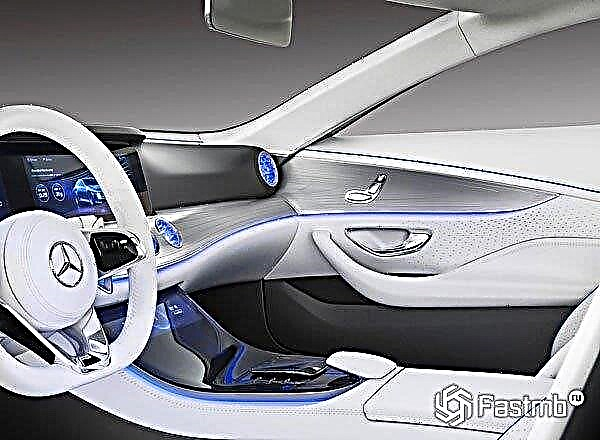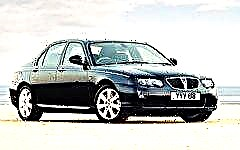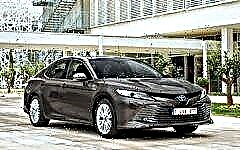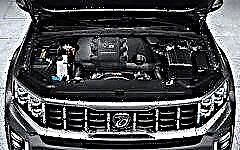

The content of the article:
- Cars with the best aerodynamic characteristics
From year to year, automakers around the world are trying to make their cars even faster, more sustainable and more fuel efficient. Therefore, engineers and designers involved in the design and assembly of cars devote so much time to the aerodynamic performance of their creations.
The lower the level of aerodynamic drag of the car, the higher its top speed, the lower the fuel consumption and the more stable behavior on the road. In today's selection - cars with the best aerodynamic characteristics.
Cars with the best aerodynamic characteristics
Mercedes-Benz CLA BlueEFFICIENCY

In 2013, Mercedes introduced a special version of the CLA BlueEFFICIENCY sedan, in the development of which great attention was paid to aerodynamics.
Thus, the car received special aerodynamic stampings, a special design of the front struts and exterior mirrors, as well as a special design of light-alloy wheels. As a result, the value of resistance to oncoming air flows was only 0.22 Cx.
Tesla model 3

The Cx coefficient for electric cars is one of the most significant indicators, because the lower it is, the less the car consumes electricity and the greater the distance it can travel.
That is why, when creating the Tesla Model 3, the manufacturer paid special attention to its aerodynamics. As a result, the car received a stylish streamlined body, and the drag coefficient was only 0.21Сх.
In the standard version, the electric car is capable of covering 215 miles (346 km), while the car accelerates from zero to hundreds in just 6 seconds.
Volkswagen XL1

In 2013, Volkswagen showed the XL1 model, which, despite its futuristic and, frankly, controversial appearance, was still put into mass production.
A total of 250 copies of the model were released. The justification for such an unusual design was the low coefficient of aerodynamic drag equal to 0.19 Cx, which is the best result among production cars.
Daihatsu UFE-III Concept

In 2005, the management of Daihatsu at the Tokyo Motor Show demonstrated a concept car of the compact class, called the UFE-III.
Under the hood of the car was an economical hybrid power unit, represented by a 0.66-liter gasoline engine and a small electric motor.
The model boasted low fuel consumption, not exceeding 1.6 l / 100 km, as well as excellent aerodynamics - the drag coefficient was only 0.168 Cx.
General Motors Precept Concept

The Precept Concept was introduced in 2002. The car had an unusual appearance, made in the style of the iconic Citroen DS, as well as a quick appetite, not exceeding 3 liters / 100 km.
At the same time, Precept could boast of having a 5-seater saloon, as well as a drag coefficient of 0.163 Cx.
Unfortunately, the manufacturer considered the car too expensive and difficult to design, which is why it was decided not to put it into mass production.
Volkswagen 1 Liter Car Сncept

In 2002, the German carmaker VW presented its new development - the 1 Liter Car Concept.
The car boasted a magnesium alloy frame, composite body panels, and a 0.3-liter single-cylinder diesel engine with 8.5 horsepower.
When creating a car, manufacturers were faced with the task of creating the most economical car, and they succeeded. The average fuel consumption of the car was only 0.99 l / 100 km. This indicator was achieved due to the small mass (290 kg) and the minimum aerodynamic resistance, which is only 0.159 Cx.
JCB Dieselmax

In 2006, the diesel JCB Dieselmax set a speed record, accelerating first to an impressive 529 km / h, and then to 563.42 km / h. Thus, the car was able to break the previous record of 380 km / h, which was set back in 1973.
The rides were carried out at the Bonneville Salt Lake, located in Utah (USA).
The car boasted a streamlined body with a drag coefficient of 0.147 Cx, as well as a pair of diesel engines installed on excavators.
The car is currently kept in the museum of the JCB company.
Fiat Turbina

In 1954, the Italian automaker Fiat introduced the Turbina, the first European car with a gas turbine engine.
The maximum output of the power plant reached 300 liters. sec., and the maximum speed reached 250 km / h. However, the most important feature of the model was its aerodynamically highly efficient body, the value of aerodynamic drag of which was only 0.14 Cx.
Despite the presence of first-class aerodynamics, the car was deemed unpromising and was sent for storage to the Turin Auto Museum, where it is located to this day.
Ford Probe V Concept

In 1983, Ford began development of the Probe V Concept, which made its official debut in 1985.
The car had a futuristic appearance with sliding side doors. In addition, the engineers covered the wheels with special shields, and the glass was glued into the window openings flush with the body surface.
The famous Italian studio Ghia was engaged in the development of the design of the car, whose employees, together with the engineers and designers of Ford, managed to achieve an impressive aerodynamics - 0.137 Cx.
But despite all the efforts of the developer, the car never went into mass production, remaining an unusual and stylish concept.
Goldenrod Land Speed Race Car

The Goldenrod Land Speed Race Car was designed by the Summers brothers back in 1965, and the car still bears the title of the most aerodynamic in the world today.
So, the drag index of the "automobile torpedo" is only 0.117 Cx. The machine was set in motion by means of 4 seven-liter 8-cylinder gasoline engines located longitudinally one after another and generating a total of 2,400 hp. with.
Conclusion
The struggle for the best aerodynamics continues, which means that very soon we can see a concept or production version of a car, the aerodynamic performance of which will be able to surpass that of the Goldenrod Land Speed Race Car.











